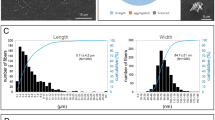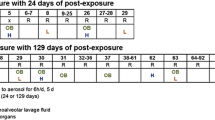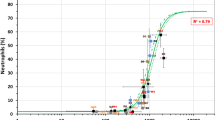Abstract.
Two independent bioassays are available which have examined the potential carcinogenicity of monomeric and polymeric methylene diphenyl diisocyanate (MDI) following long-term inhalation exposure in rats. Thesestudies are not directly comparable, however, due to differences in design and conduct of the in-life phase, and differences in nomenclature used for some of the histopathological findings. This paper presents a definitive overview ofthe pulmonary toxicity of MDI developed following a thorough review of both investigations. As part of this process, the test materials and the designs of the studies were compared, and an in-depth review of lung lesions was conducted by an independent reviewing pathologist.This included the re-examination of the original lung slides, supported by an analysis of the exposure regimens, the results of which were used to develop an accurate profile of the doses received by the animals in the two studies. Histopathological findings were then combined with this information to give an overall dose-response curve for both studies as a whole. The range of total inhalation exposures to MDI was calculated as 559, 1972, 2881, 6001, 17,575 and 17,728 mgh/m3. Major pulmonary effects included increased lung weights together with bronchiolo-alveolar adenomas and hyperplasia, and interstitial fibrosis which occurred consistently in both studies, indicating a very similar qualitative response of the lungs to polymeric and monomeric MDI. The quantitative response of the lung was clearly dose-related in each study, and when the studies were considered as a whole a reasonable overall dose-response relationship was apparent for major lung lesions. Lung tumours (in low incidences) only occurred at the highest dose level in both studies (17,575 and 17,728 mgh/m3). For inflammatory and other non-neoplastic pulmonary changes, the lowest dose examined (559 mgh/m3) was regarded as a no-observed-adverse-effect-level for both polymeric and monomeric MDI. It was concluded that the results of the two studies could be combined to serve as a basis for human risk assessment of MDI.
Similar content being viewed by others
Author information
Authors and Affiliations
Additional information
Electronic Publication
Rights and permissions
About this article
Cite this article
Feron, .V., Kittel, .B., Kuper, .C. et al. Chronic pulmonary effects of respirable methylene diphenyl diisocyanate (MDI) aerosol in rats: combination of findings from two bioassays. Arch Toxicol 75, 159–175 (2001). https://doi.org/10.1007/s002040100223
Received:
Accepted:
Issue Date:
DOI: https://doi.org/10.1007/s002040100223




